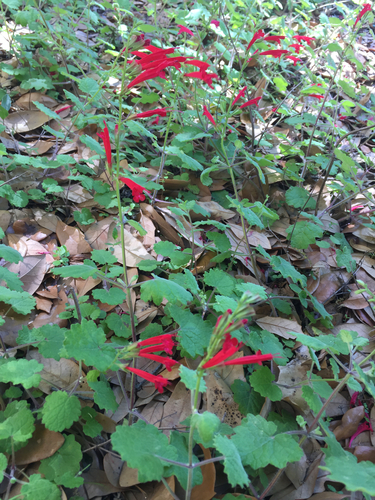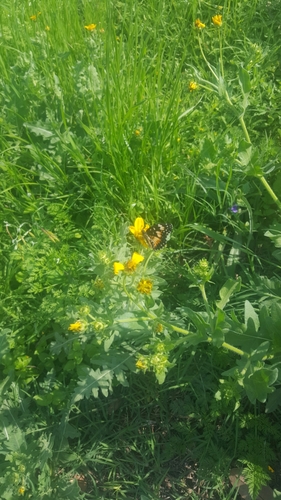On our first campus outing with iNaturalist I found this nice flowered plant outside of JBWS. I had absolutely no idea what the identity of the plant was, but I thought it looked pretty. Dr. Belaire suggested that I take a photo and include some specs about the plant, like its height, leaf size, and leaf type. Upon posting I immediately received some responses about the id of the plant. One user correctly placed it into the sage family and another user narrowed it further to Cedar Sage. I googled Cedar Sage and, after some online research, determined that the user was correct. I found that Cedar Sage often grows underneath trees, which is exactly where I found this plant. I also found that this plant is native to Texas, specifically the Edward’s Plateau.
Source: https://www.wildflower.org/plants/result.php?id_plant=saro3
Observation: http://www.inaturalist.org/observations/5433887










